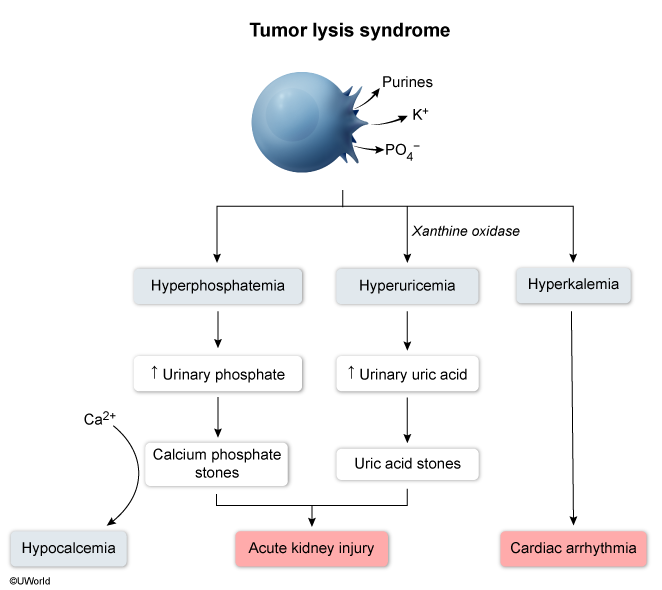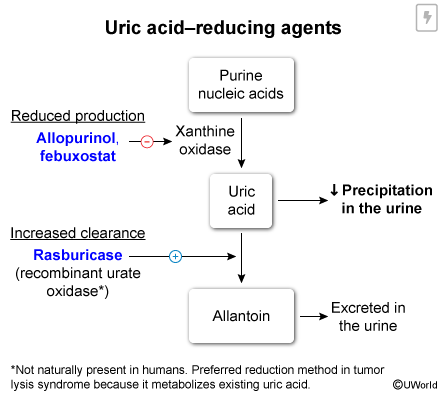Tumor Lysis Syndrome (TLS)
Article Sections
Introduction
Tumor lysis syndrome (TLS) is a potentially life-threatening oncologic emergency characterized by severe metabolic disturbances resulting from the rapid release of intracellular components into the bloodstream. This massive cellular breakdown typically occurs after initiation of a cytotoxic therapy such as chemotherapy, radiation, or immunotherapy in patients with high tumor burdens or rapidly proliferating malignancies. Although TLS is most commonly associated with hematologic cancers such as acute lymphoblastic leukemia and high-grade non-Hodgkin lymphomas, it can also occur spontaneously in certain solid tumors with high turnover rates.
Pathophysiology
TLS (Figure 1) arises when massive tumor cell death leads to the release of intracellular ions and nucleic acids, overwhelming the body's homeostatic mechanisms:
- Hyperkalemia: The sudden release of intracellular potassium can result in dangerous cardiac arrhythmias and muscle weakness.
Continue Learning with UWorld
Get the full Tumor Lysis Syndrome (TLS) article plus rich visuals, real-world cases, and in-depth insights from medical experts, all available through the UWorld Medical Library.
Figures

